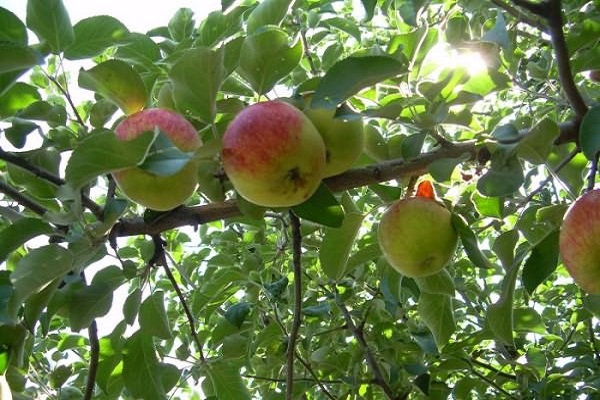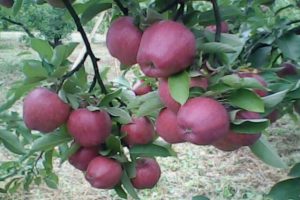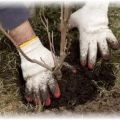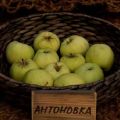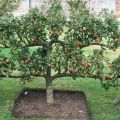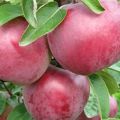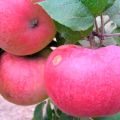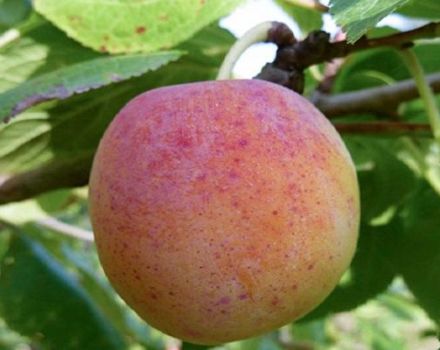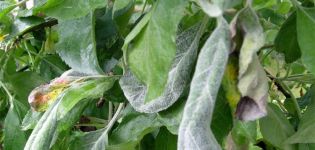Description and features of the winter apple variety Lyubava, cultivation and yield
The apple tree of the Lyubava variety is a good winter species of apple trees in the Russian selection. Delicate, white and juicy pulp with a sweet and sour aftertaste will not leave indifferent family members. A tree in cultivation cannot be called whimsical. We propose to consider in more detail what an apple tree is.
Description and features
The second name for the variety is Swan Song, which belongs to winter varieties. Their beautiful appearance makes them a real decoration for gardens. Trees grow tall with a rounded crown.
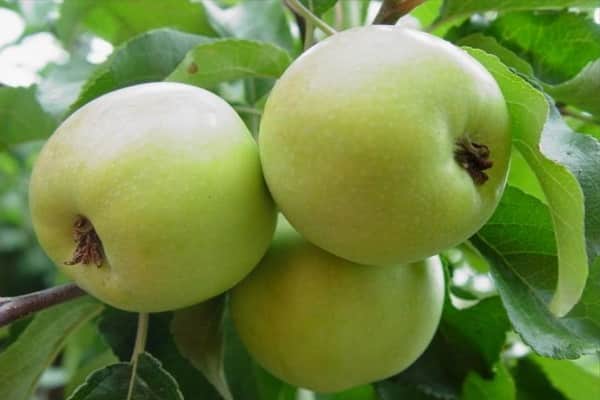
Shoots are small, red-brown in color, without strong pubescence. The leaf is oval and medium with jagged edges, and the surface of the plate is wrinkled, green in color.
In spring, the flowers are large, white, chalky, emitting a bright aroma, pink in color.
Apple fruits are round in shape. Mostly the same size and color - green. One apple weighs up to 100 grams. Cutting the fruit, white flesh is visible, juicy and sweet and sour. The rind is dense, not thin.
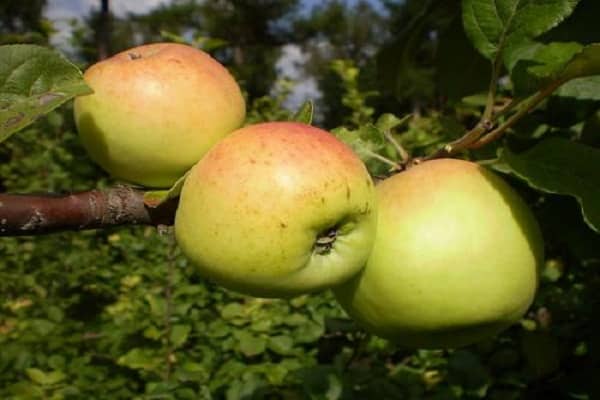
History of creation
The Swan Song variety was bred at the Krasnoyarsk station for the development of selection in 1997. N.N. Tikhonov and P.A. Zhavoronkov.
For breeding, a hybridization method was used, which is considered popular for obtaining new tree species. Crossing took place between Golden Delicious and Aport winter varieties. The process took place in 4 stages:
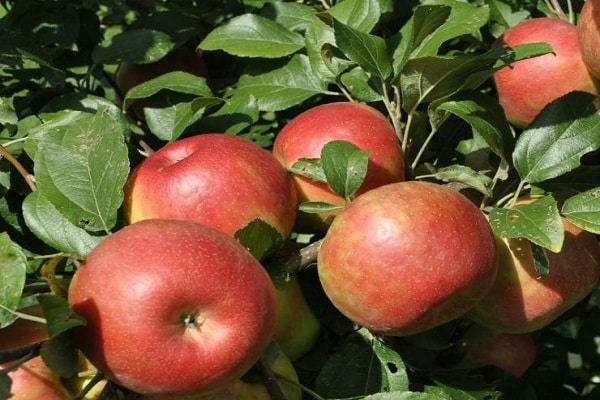
- Pollination 2 times. Then the mother trees were taken care of. As a result, the appearance of hybrid fruits was expected.
- Extracting seeds from apples.
- Planting in prepared soil. Seeds are preliminarily stratified from January to March.
- Caring for new seedlings.
For cultivation, the mentor's method was used, which was the Aport winter variety. Hybrid plants were placed in harsh conditions. The soil was poor. All this was done for the frost resistance of apple trees.
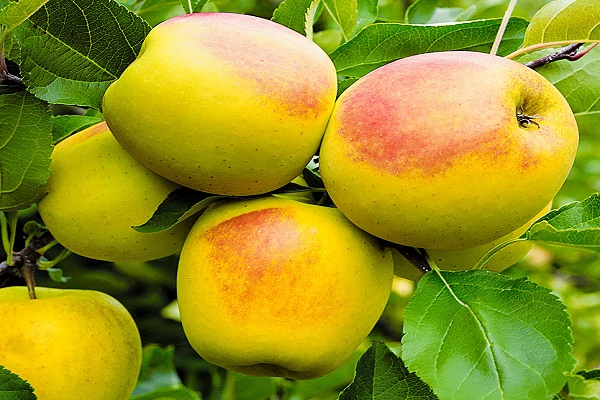
Apple-tree fruiting Lyubava
This type of apple is considered to be high-yielding. Up to 45 kilograms of fruit are removed from 1 tree. After planting in open ground, the apple tree begins to bear fruit after 5 years.
Harvesting begins in the middle of the first month of autumn. Apples have time to fully ripen... It is recommended to store in a cool place for no more than six months. You can make jam, jam, compote from fruits.
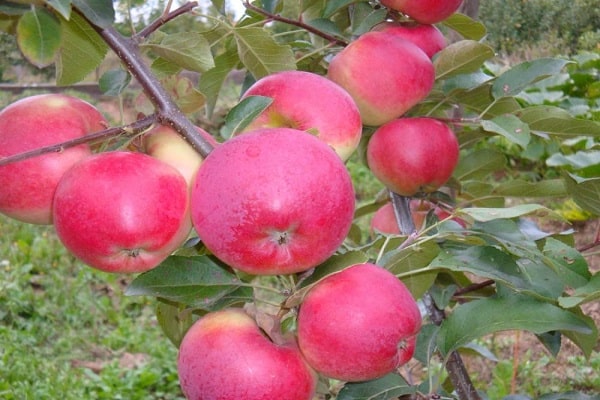
Diseases and pests
Improper tree care leads to damage to pathogenic microflora. The apple tree begins to hurt and if you ignore the signs, all the work in growing will be in vain.
Consider the most popular diseases and pests:
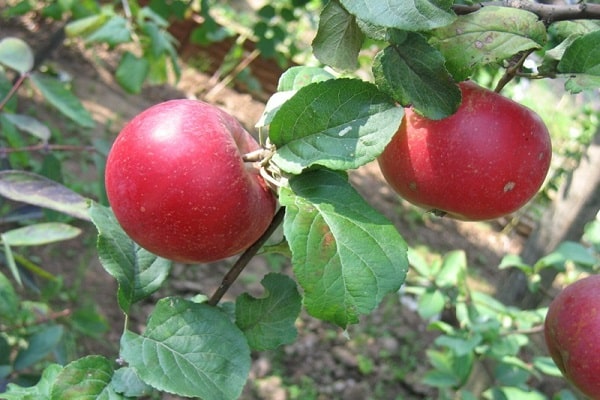
- Powdery mildew or a fungus that affects all parts of the apple tree.The first manifestation (in the form of a white bloom) in early spring during the appearance of buds and first leaves. To eliminate the fungus, it is recommended to use sulfur-containing preparations.
- A bacterial burn is an infectious disease. Branches and young shoots become dark brown. In appearance, they resemble charred branches. It spreads to other fruit trees rapidly. First of all, it is required to remove the affected area and treat all trees in the area with disinfectants.
- Black cancer. The disease manifests itself in the spring in the form of spots on the leaves. Their color is purple. Increase in size over time. The fruiting bodies of the infectious fungus are visible on the crown. In the absence of treatment, apple tree sheds leaves and fruits... To eliminate the fungus, it is required to remove the infected branches, process and begin to heal the wounds that have appeared.
- Fruit rot. It manifests itself in 2 stages: in spring (adversely affects flower stalks, branches) and in autumn (affects fruits, reducing the yield and shelf life of apples). Treatment - removal of the lesion. Putrid fruits are immediately removed from the tree.
- Apple moth - a silvery white butterfly. Suspends the development of the tree until the pest is completely eliminated. Chlorophos solution has a detrimental effect on it.
- Green aphids are small insect pests, reaching a length of 7 mm. They infect the plant quickly. To eliminate the pest, it is necessary to remove the old bark under which the insect reproduces.

Where is the best place to grow?
The apple tree grows well and develops in harsh conditions. Altai Territory is considered the main area for cultivation.
Trees do not freeze, have an excellent regenerating ability after hibernation. During active growth, do not forget to fertilize the tree during the spring and fall.

In hot and dry areas, acclimatization is more difficult. For "Lyubava" it is recommended to use moist and loose soil. It is worth remembering that the apple tree feeds on nutrients supplied to the soil through the root system of the fruiting tree.
If the terrain is arid, then it is required to regularly and abundantly water the Lubava apple tree as the soil dries up. Under normal climatic conditions, watering is carried out up to 2 times in 7 days.
